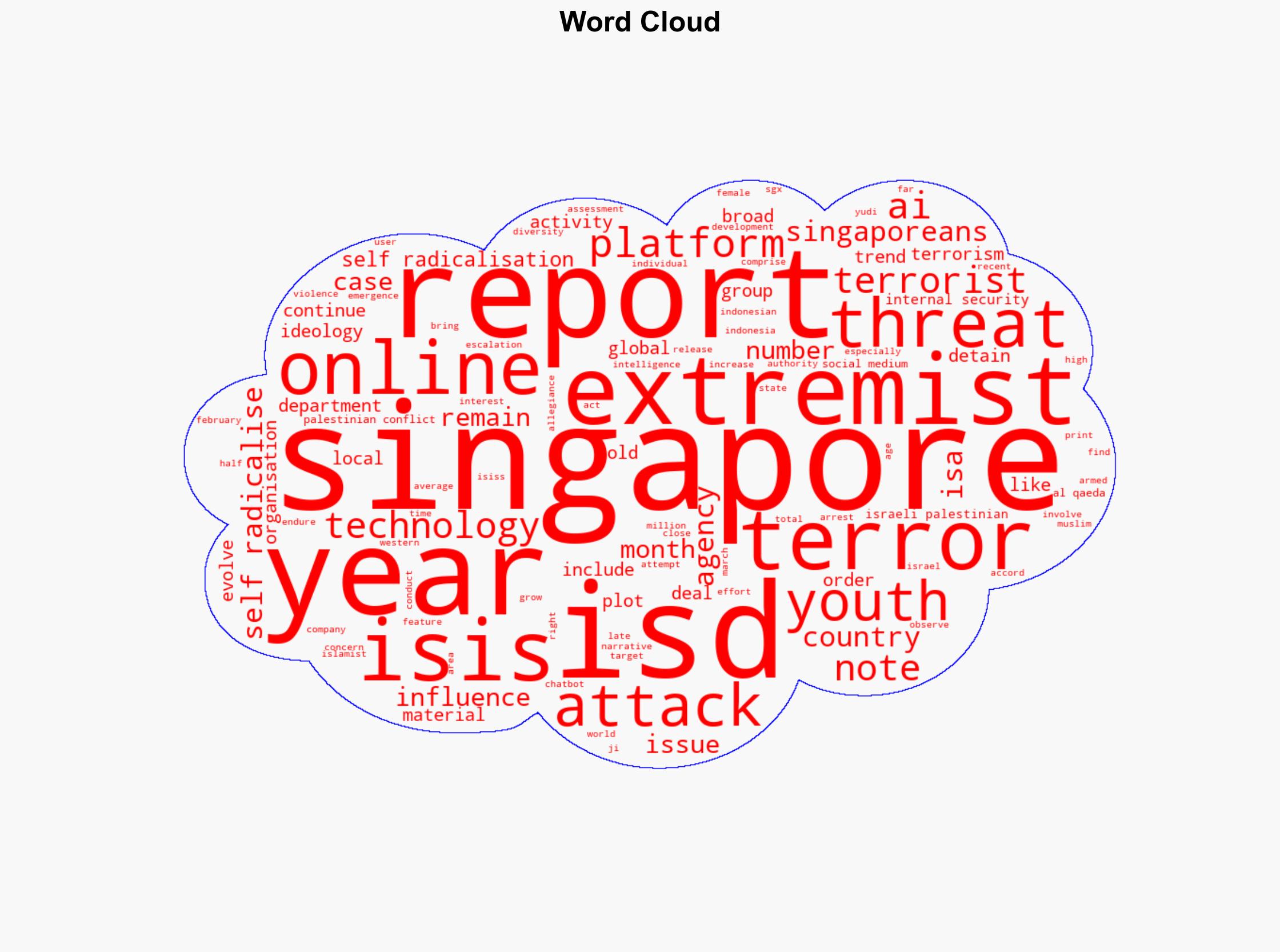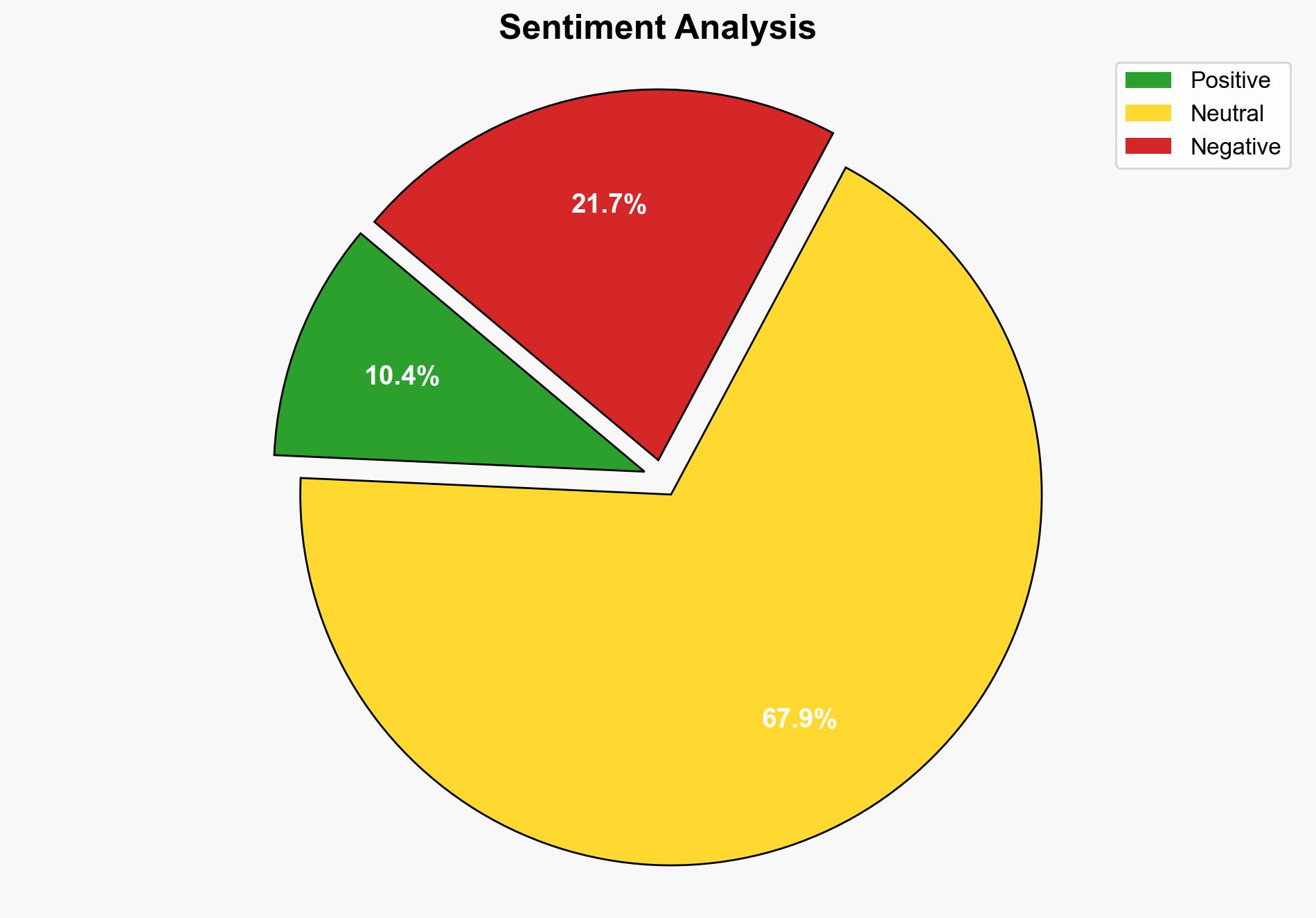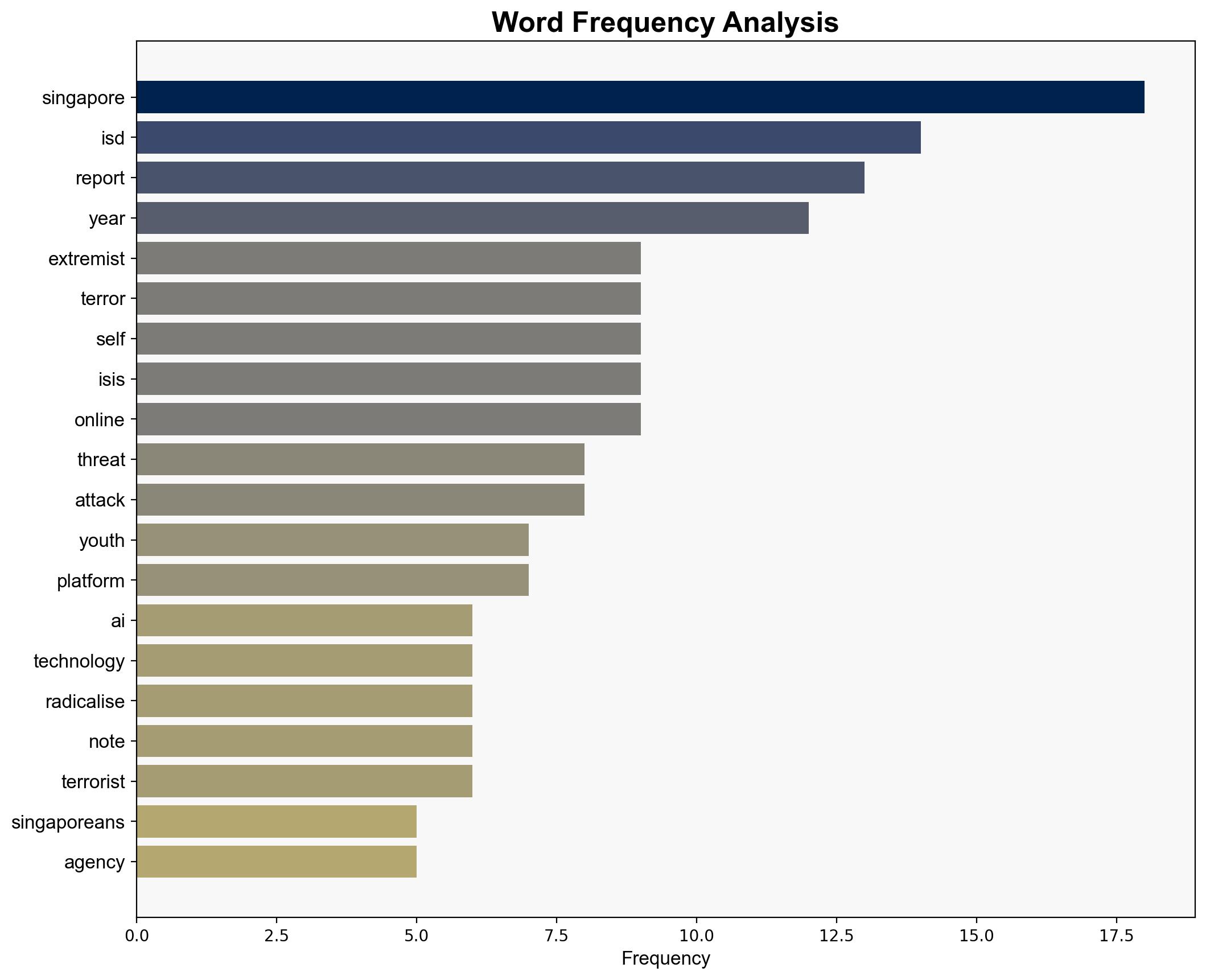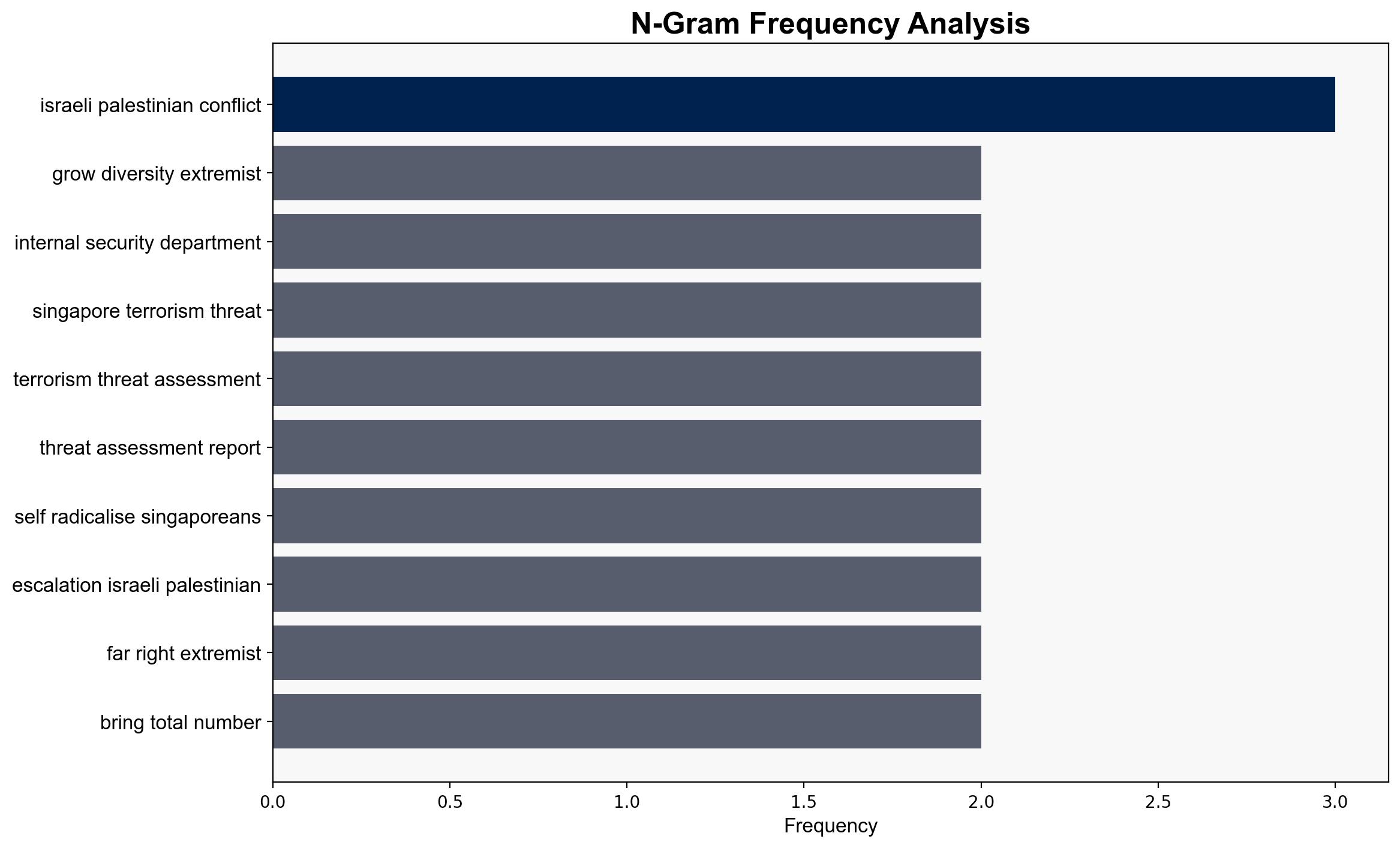ISD flags growing diversity of extremist ideologies in Singapore emergence of AI as terror enabler – CNA
Published on: 2025-07-29
Intelligence Report: ISD flags growing diversity of extremist ideologies in Singapore emergence of AI as terror enabler – CNA
1. BLUF (Bottom Line Up Front)
The intelligence suggests a growing diversity of extremist ideologies in Singapore, exacerbated by the emergence of AI as a potential enabler of terrorism. The most supported hypothesis is that AI technology is accelerating the radicalization process and facilitating extremist activities. Confidence level: Moderate. Recommended action: Enhance monitoring of online platforms and collaboration with tech companies to mitigate AI-driven radicalization.
2. Competing Hypotheses
1. **AI as a Catalyst for Rapid Radicalization**: AI technologies, particularly chatbots, are significantly reducing the time required for individuals to become self-radicalized by providing tailored extremist content and facilitating communication among extremists.
2. **Diverse Ideological Landscape as Primary Driver**: The increasing diversity of extremist ideologies, rather than AI, is the primary factor driving radicalization in Singapore, with AI playing a secondary role in facilitating communication and recruitment.
Using ACH 2.0, the first hypothesis is better supported by the evidence of AI chatbots generating extremist content and instructions for attacks. The rapid radicalization cases align with AI’s influence, while the diversity of ideologies is a broader context rather than a direct cause.
3. Key Assumptions and Red Flags
– **Assumptions**: AI technologies are assumed to be widely accessible and capable of generating sophisticated extremist content. The role of diverse ideologies is assumed to be less direct in causing radicalization.
– **Red Flags**: The intelligence may overlook the role of socio-political factors in radicalization. There is a potential bias towards attributing causality to technology without considering human agency.
– **Inconsistent Data**: Lack of specific data on the effectiveness of AI-driven radicalization compared to traditional methods.
4. Implications and Strategic Risks
The integration of AI in extremist activities could lead to more sophisticated and harder-to-detect terrorist plots. This technological evolution poses risks to national security and requires adaptive counter-terrorism strategies. The psychological impact of rapid radicalization, especially among youth, could destabilize social cohesion. Geopolitically, the trend mirrors global patterns, necessitating international cooperation.
5. Recommendations and Outlook
- Enhance AI monitoring capabilities to detect and counter extremist content online.
- Strengthen partnerships with technology firms to improve content regulation and removal.
- Develop educational programs to increase digital literacy and resilience against radicalization.
- Scenario Projections:
- **Best Case**: Successful collaboration with tech companies leads to a significant reduction in online radicalization.
- **Worst Case**: AI-driven radicalization accelerates, leading to increased terrorist activity and social unrest.
- **Most Likely**: Gradual improvement in counter-radicalization efforts with ongoing challenges in AI regulation.
6. Key Individuals and Entities
– No specific individuals mentioned in the source text.
– Entities: Internal Security Department (ISD), technology firms, social media platforms.
7. Thematic Tags
national security threats, cybersecurity, counter-terrorism, regional focus





